Are you managing multiple social media channels at the same time? I know how daunting the whole process could be.
The good news is there are many social media management platforms available to automate the process and reduce your workload.
From boosting social media engagement to selling your products and services, a social media management tool can help you meet your sales and marketing goals fast.
So in this post, I’ll review and compare the top two choices when it comes to picking a social media automation platform: Hootsuite vs Buffer. Let’s get started.
Disclaimer: If you buy any products through links on this site, I may earn a commission. But it doesn't make any difference to your cost, and it helps me keep this blog running. So you could always read my articles for free.
Buffer vs Hootsuite overview
Both Hootsuite and Buffer offer industry-leading solutions for handling multiple social media channels. These platforms let business owners and marketing professionals manage their whole social media footprint from one place.
While there are many similarities between the two, the audiences they serve are a bit different. Soon, we’ll get to the nitty-gritty of how both software work. But first, a basic overview of these platforms is in order.
What is Hootsuite?
Hootsuite is a social media management solution created by Ryan Holmes in 2008. It offers a comprehensive set of features to handle all the aspects of your social media presence.
These include content curation, post-scheduling, and detailed analytics reporting to gauge the ROI of your marketing efforts.
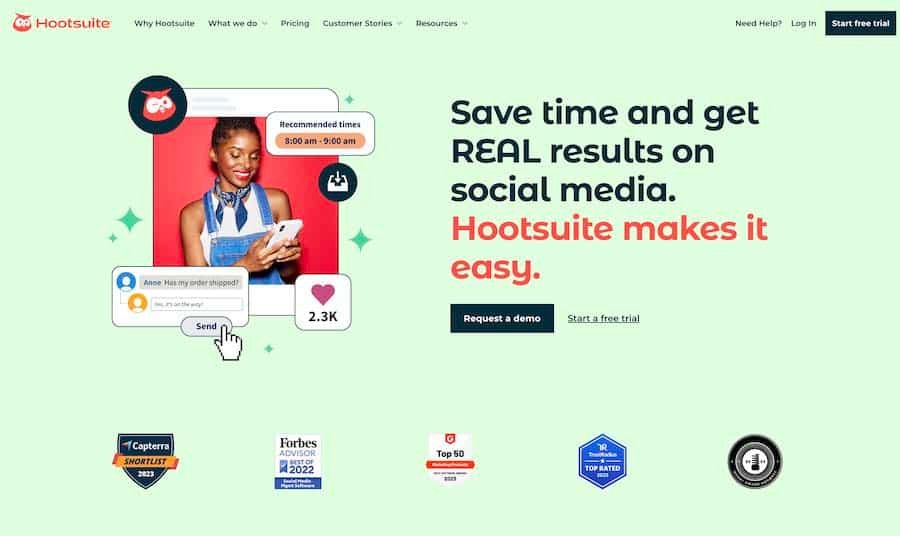
In Hootsuite, you’ll find a neat user interface and a single portal for viewing and improving the performance of all your social media campaigns.
Not to mention the team collaboration capabilities and integration with hundreds of third-party tools in your existing technology stack.
What is Buffer?
Buffer is a simple and neat social media tool through which you can plan and publish content on your social media accounts.
You’ll be surprised by how easy it is to set up your account and start posting content on social media. In fact, Buffer’s biggest value proposition is its overall ease of use.
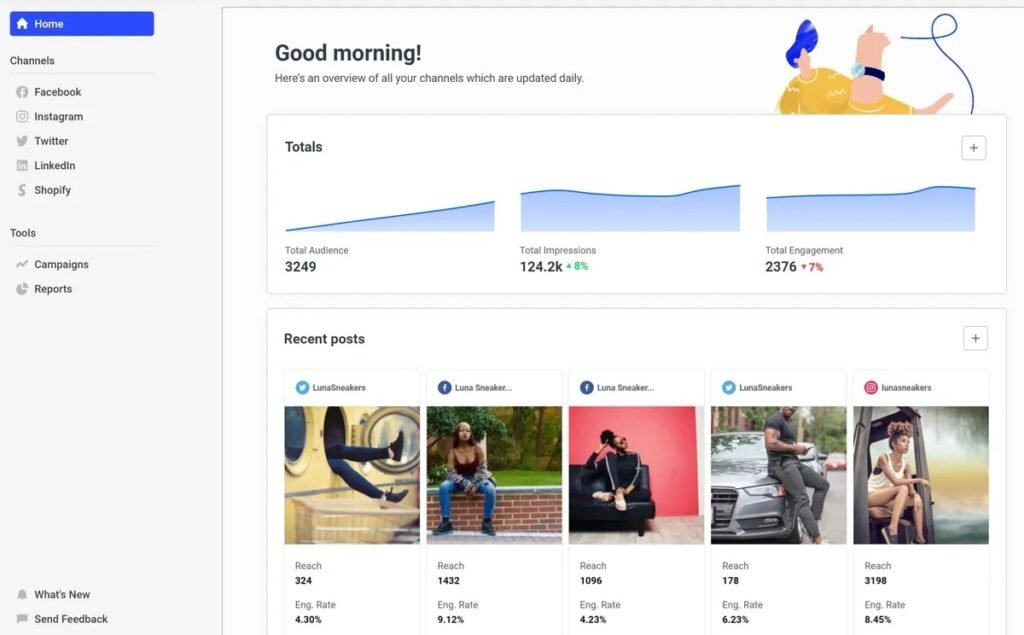
Besides that, Buffer has functionalities for data analytics and performance reporting. It can share insightful suggestions for boosting the reach and engagement of your social media posts. It also supports recent social media trends such as Instagram Stories.
So, what’s the difference?
Although both Buffer and Hootsuite let you post content to well-known social networks, there’s a key difference in who they serve and how they operate.
At its core, Hootsuite is a comprehensive tool that lets you handle all the facets of social media marketing and management from a unified portal. So it’s a tool packed with a ton of features and detailed analysis of your campaigns.
Buffer, on the other hand, focuses more on the simplicity of scheduling and posting content. And this simplicity and ease of use comes at the expense of extra and advanced features that it chooses not to offer.
Hootsuite vs Buffer: feature comparison
As discussed, Buffer and Hootsuite both offer social media management solutions, yet differ in features and benefits.
Buffer excels in simplicity and scheduling, ideal for small businesses. Hootsuite boasts robust analytics and team collaboration tools, catering to larger enterprises. Both empower users to streamline social media efforts, catering to diverse needs.
So let’s see the key features I’ve come to expect from a social media automation platform, and to what extent Buffer and Hootsuite deliver those features.
Scheduling and publishing
Both Hootsuite and Buffer let you post content to your social media channels. And both let you schedule posts for later and personalize the posts for different social media platforms. But how these tools handle scheduling is different.
Buffer provides the Buffer Queue — a configurable schedule of when your social media posts will go live. Using this feature, you can plan your social media content for about a month in the future. And it offers other benefits like:
- Allowing you to insert emojis in posts
- Supporting photo uploads
- Letting you publish one post on many channels
- Helping you create images with Pablo – a DIY photo editing tool
With Hootsuite, you can modify and schedule social media posts manually or automatically. If you use auto-scheduling, Hootsuite will determine the best publishing time for your post on its own.
While this will certainly lift some of your burden, you won’t be able to publish your posts in a certain order, if that’s what you want.
Another difference is in the visualization of your posting schedule. In Hootsuite, you can view the content you have planned for up to a week. In contrast, Buffer gives you multiple view options, such as weekly, monthly, and list-based views.
Coming to commonalities, both Buffer and Hootsuite let you fetch content syndicated from blogs and RSS feeds for publishing. They also have browser add-ons to add random web pages to your social media posting schedule.
So overall, we can see that both Hootsuite and Buffer have robust scheduling and publishing capabilities. Buffer shines in its ease of use, while Hootsuite has more options and flexibility with regard to scheduling social media posts.
Winner: It’s a tie
Ease of use
As if I haven’t mentioned this already! The difference between Buffer and Hootsuite that you’ll notice right off the bat is the user interface.
Buffer has a super-neat and smooth dashboard where you can see a queue of all the social media content that you have scheduled for the coming days.
This minimalistic view does a great of emphasizing what’s most important: your planned social media posts. This makes Buffer suitable for individuals and small businesses.
Hootsuite, in comparison, has a lot more going on in the interface. It’ll take some time to learn and get familiar with it. This is understandable considering that it has more features. So it’s dashboard can’t be as attractive as Buffer’s.
For example, Hootsuite’s dashboard isn’t just meant to view your scheduled content. It also lets you check your social timelines and monitor brand mentions across all your social media networks. This makes Hootsuite a great fit for medium and large enterprises.
But if I were to focus only on how user-friendly, intuitive, and easy-to-learn a tool is, I’d have to pick Buffer.
Winner: Buffer
Team collaboration
Do you have a large team or a small one? Because how many people you have on your team might be a deciding factor when choosing between Hootsuite and Buffer.
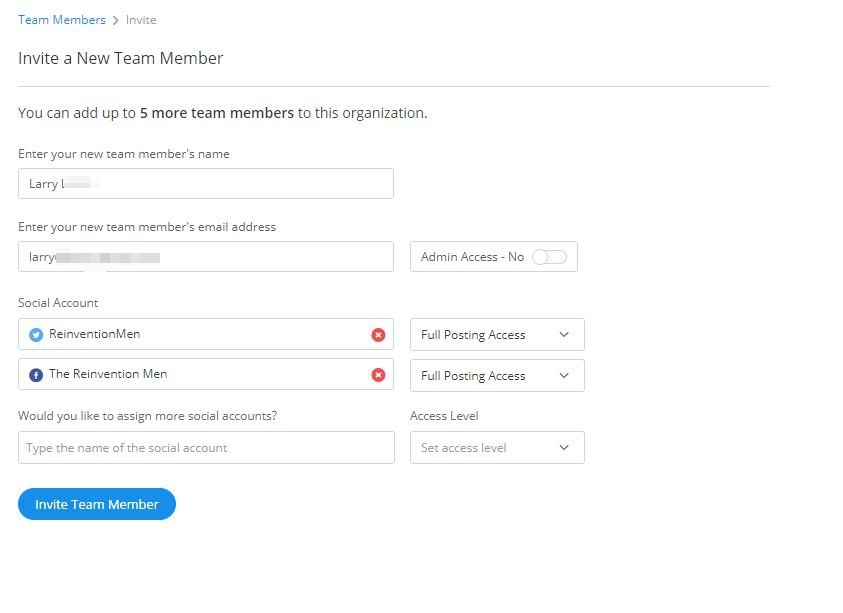
Just to be clear, both the tools let you assign certain social media accounts to particular staff members. But their approach is different.
With Buffer, you’ll manually choose the social media accounts you want to assign to your teams. Basically, you get to decide between one of the two types of user roles and permissions: Contributor and Manager.
Now, I guess such a basic, straightforward, and simple system is okay for small businesses that are managing a few social media profiles.
But large organizations with a huge number of channels and profiles to manage will need more granular control over who can do what. In that regard, Hootsuite’s extensive team management features will come in handy.
With Hootsuite, you can split your social media teams into individual users or groups. In fact, you can create groups on an organizational level, making it easier to handle large-scale campaigns.
Winner: Hootsuite
Content curation
To grow your business online, you need a lot of high-quality content. And you can’t develop a lot of interesting content overnight. It’s a slow process.
But your audience craves content now. And you somehow need to fill your social media accounts with great posts every day. So what’s the solution? Borrowing content from other sources. This is called content curation.
Both Buffer and Hootsuite have features that help you with curating content. Buffer has a Content Inbox. You can use it to handle RSS feeds and discover fresh content for your social media posting calendar.
Other than that, Buffer supports integration with third-party content curation tools like Feedly and Pocket.
Hootsuite has some unique features up its sleeve as well in the content curation department. For example, you can run keyword and hashtag searches on Twitter and Instagram from within the platform.
When you come across posts that you want to share, you can post them more easily than Buffer.
Another feature Hootsuite and Buffer have in common is the browser extension. That being said, Hootsuite’s extension is better as it makes it easy to find and fill content in your social media queue. You can even view a feed of the latest posts for your chosen topic.
Overall, I’d consider Hootsuite and Buffer to be at the same level when it comes to content curation. Buffer is great for tracking RSS feeds, while Hootsuite shines in monitoring social media searches.
Winner: Tie
Supported social media channels
With Buffer, you can plan and publish updates on the following social media networks:
- Facebook (pages and groups)
- LinkedIn (pages and profiles)
The notable exception here is YouTube. Now, Hootsuite can post on all these channels too, including YouTube and WordPress. Heck, it even lets you post content on second-tier social media platforms. These include Tumblr, Reddit, Mixi, and Foursquare.
While the social channels supported by Buffer are probably enough for your requirements, Hootsuite takes the cake if you want more.
Winner: Hootsuite
Social interaction management
This is an area that both Buffer and Hootsuite approach entirely differently. With Hootsuite, social interaction management is part of the core product.
And since you can personalize the dashboard as per your preferences, handling comments and messages is easy.
You also get a feature called Hootsuite Streams. It lets you reply to any activity on your social media accounts just like you would on that particular channel.
For example, you can respond to comments on your Facebook posts from Hootsuite itself. You don’t need to open Facebook in a separate tab.
All in all, Hootsuite provides you with everything you need to monitor and engage your social media followers in real time.
On the other hand, Buffer does not include conversation management in its core product. Instead, it offers a completely separate tool for managing social media interactions.
This separate tool is called Buffer Reply. And while it has many valuable features, it also has its own separate pricing, which is not cheap. It sells at $50/month for the basic plan, and that too only for one social media account.
Winner: Hootsuite
Advertising management
Let’s face it. Social media’s organic reach is not what it used to be. Social media websites like Facebook would rather have you pay to gain visibility for your posts. So if you’re not advertising, it’ll be hard to reach your target audience.
Now, managing multiple advertising campaigns on different social media platforms is no piece of cake. These campaigns need regular monitoring and optimization. Plus, you’ll find yourself switching back and forth between multiple social media networks to manage your ads in each.
That’s why a good social media management tool is expected to have features to manage your advertising campaigns as well. And it does that by giving you a single dashboard to handle all your campaigns on all social media channels.
Hootsuite, being the complete social media solution that it is, gives you this capability. But unfortunately, Buffer doesn’t.
So when it comes to managing your social media advertising campaigns, Hootsuite takes the cake by default.
Winner: Hootsuite
Social media analytics
Being able to view and analyze the engagement and overall performance of your social media efforts is crucial for your business. So both Hootsuite and Buffer provide many features in the social media analytics and reporting area.
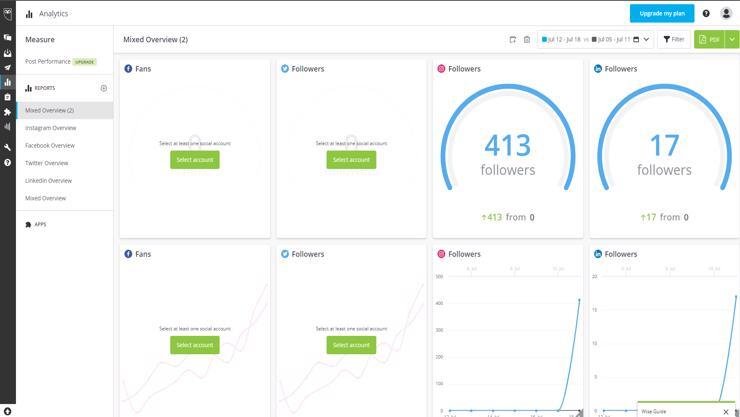
Hootsuite offers real-time analytics reporting and engagement metrics for each post. So you can get a complete picture of your social media performance on all your chosen social media channels.
Buffer is a little limiting in this area, as it’s primarily meant for publishing social media posts only.
It shows you some basic analytics data, but only for posts that you publish through Buffer. If you posted something on a social media channel’s native interface, you won’t see how the post did.
Winner: Hootsuite
Hootsuite vs Buffer: pros and cons
To summarize what we have discussed so far, let’s quickly see the pros and cons of both Hootsuite and Buffer.
Hootsuite pros and cons
Pros:
- Supports more social media channels than Buffer
- All-in-one social media management toolkit
- Built-in interaction and advertising management
Cons:
- The user interface is more complex than Buffer
- Content creation is not as simple as Buffer
Buffer pros and cons
Pros:
- Intuitive user interface
- Simple team collaboration features
- Easy content scheduling and publishing
Cons:
- Doesn’t let you manage advertising
- No social media monitoring and conversation management
Hootsuite pricing
Hootsuite offers three main pricing plans:
Professional: $99/month for 1 user and 10 social accounts, including features like unlimited scheduling, best time to post recommendations, and custom analytics.
Team: $249/month for 3 users and 20 social accounts, with additional features like team roles, automated link tracking, and up to $2,000 for post boosting.
Enterprise: Custom pricing for 5+ users and 50+ social accounts, offering advanced tools like approval workflows, content library, unlimited ad spend, and single sign-on (SSO).
Buffer pricing
Buffer offers four pricing plans:
Free: $0 for up to 3 channels, 10 scheduled posts per channel, landing page builder, and AI Assistant.
Essentials: $6/month per channel, with features from Free plus engagement tools and analytics reports.
Team: $12/month per channel, includes Essentials features plus unlimited team members and draft collaboration.
Agency: $120/month for 10 channels, includes Team features plus custom access, permissions, and agency-friendly pricing.
Wrapping up: Hootsuite vs Buffer
So, that was my in-depth comparison of Buffer vs. Hootsuite to help you decide which to use. As you can see, both are powerful solutions for managing your social media presence.
The difference lies in their focus on simplicity and feature set. If you’re a small business and want something simple just to schedule and publish content fast, you’d like Buffer.
But if you manage social media campaigns for a large organization and need advanced features, Hootsuite is the way to go.
Did I miss anything? Did you try these tools? Do you have any questions or comments? Share your thoughts below in the comments section.



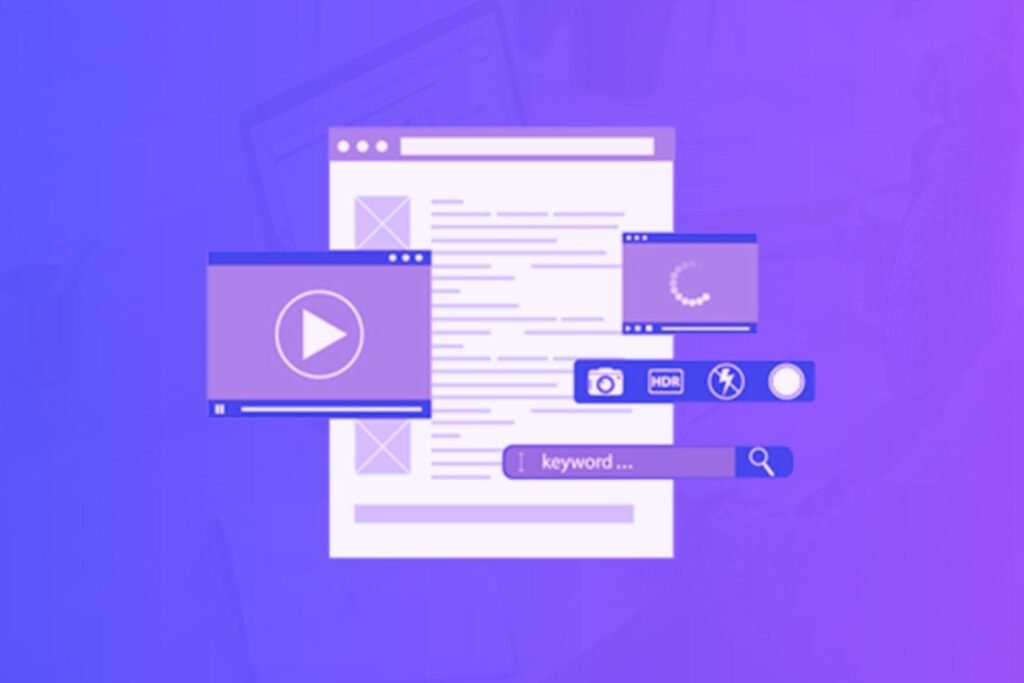
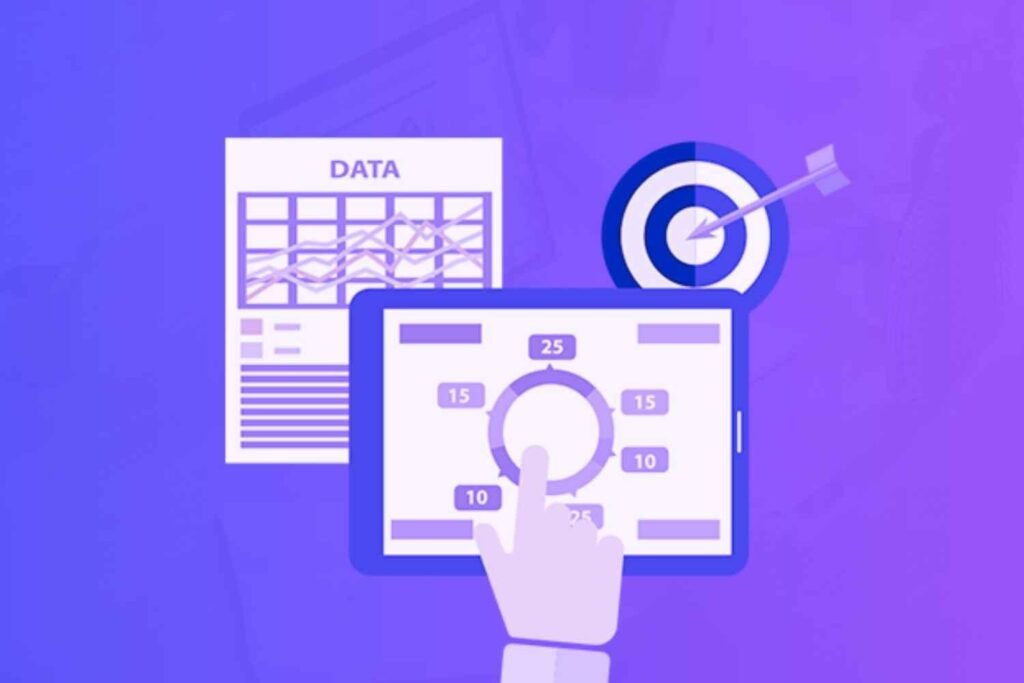

Great article, Hitesh! Very informative and useful for those managing multiple social media channels.
Both Hootsuite and Buffer are fantastic tools, each with their strengths. For those interested in exploring other options, I would recommend trying GGyess. It’s a comprehensive platform that includes modules like Publish, Tasks, Analytics, Teams, and a powerful AI to generate excellent copies and captivating images. These modules not only make scheduling and publishing content easier but also offer detailed analytics and efficient team collaboration.
Keep up the excellent content!